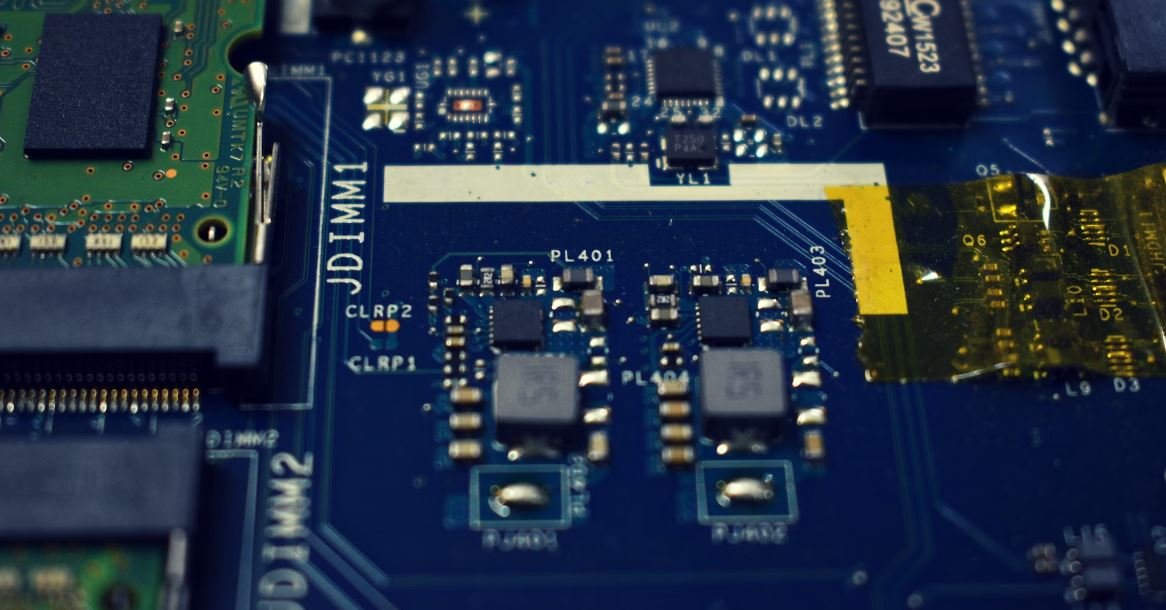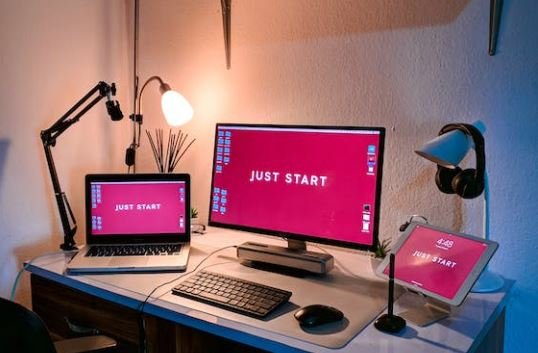Apps Icon
In today’s digital age, smartphones have become an integral part of our lives, and apps have revolutionized the way we interact with our devices. One essential element of any app is its icon, which serves as the first visual representation of the app and plays a crucial role in attracting users. In this article, we will explore the importance of app icons, discuss the key elements of an effective icon design, and provide tips on how to create a captivating and memorable icon for your app.
Key Takeaways:
- App icons are the initial visual representation of an app and play a significant role in attracting users.
- An effective app icon should be visually appealing, unique, and relevant to the app’s purpose.
- Create an app icon that reflects your brand identity and resonates with your target audience.
- Consider the size and shape of the app icon to ensure it is easily recognizable on different devices.
An app icon serves as a digital storefront for your app. It is the first thing users see when browsing through the app store, and it can make a lasting impression. **A well-designed icon can convey the essence and functionality of an app at a glance**. It should be visually appealing, distinct, and instantly recognizable. With millions of apps competing for attention, it is crucial to stand out from the crowd.
When designing an app icon, **consider the target audience and the brand identity**. Think about the emotions and messages you want to convey. Is your app geared towards a specific demographic? Does it convey a sense of trust, playfulness, or professionalism? Incorporating these elements will help create an icon that resonates with potential users and makes them more likely to click on it.
Another important aspect to consider is the **size and shape of the app icon**. Icons need to be identifiable and appealing on various devices, from smartphones to tablets. **A well-designed icon should be scalable and recognizable even at small sizes**. It should also be adaptable to different shapes, as some devices have rounded edges or unique form factors. Make sure to test your icon on different devices and screen resolutions to ensure it looks great in every context.
Elements of an Effective App Icon Design:
To create a captivating and memorable app icon, it is essential to pay attention to certain design principles:
- Simplicity: Keep the design clean and uncluttered.
- Consistency: Maintain a consistent style that aligns with your brand image.
- Relevance: Ensure the icon represents the app’s purpose and functionality.
- Unique: Stand out from competing apps with an original and distinguishing icon.
- Colors: Use colors that resonate with your target audience and evoke the desired emotions.
App icons serve as a visual gateway to the app experience, and **a well-designed icon can increase app downloads and user engagement**. According to a study conducted by Apptentive, **apps with eye-catching and original icons have a higher conversion rate from browsing to downloading**. Your app icon can entice potential users to click, explore, and ultimately become loyal users of your app.
Table 1: App Icon Statistics
| Statistic | Percentage |
|---|---|
| Users who download apps based on the icon | 86% |
| Apps uninstalled due to unappealing icons | 43% |
| Increased conversion rate with a compelling icon | 23% |
As more and more apps flood the app stores, it becomes paramount to create an icon that stands out among the competition. **A unique and memorable icon will help your app cut through the noise and attract users’ attention**. Whether you decide to hire a professional designer or create the icon yourself, investing time and effort into its design will pay off in the long run.
Tips for Creating an Engaging App Icon:
Here are some helpful tips to ensure your app icon captures the interest of potential users:
- Keep it simple and avoid excessive details that may not be visible at small sizes.
- Pay attention to color psychology and choose colors that evoke the desired emotions.
- Consider using unique shapes or symbols that represent the functionality of your app.
- Test your icon on different devices to ensure it looks great on various screen sizes and resolutions.
- Take inspiration from successful app icons in your industry but strive for originality.
Table 2: App Icon Color Psychology
| Color | Emotions and Associations |
|---|---|
| Red | Passion, energy, excitement |
| Blue | Trust, calmness, reliability |
| Green | Nature, growth, freshness |
| Yellow | Optimism, happiness, warmth |
| Orange | Creativity, enthusiasm, determination |
In conclusion, **app icons are a crucial element in attracting users and creating a strong first impression**. Invest time and effort in designing a visually appealing and memorable icon that aligns with your app’s purpose, target audience, and brand identity. Remember to keep it simple, test its scalability, and use colors strategically to evoke the desired emotions. **A well-crafted app icon will greatly contribute to the success and recognition of your app**.

Common Misconceptions
1. App Icons are Just for Decoration
One common misconception people have about app icons is that they are solely for decorative purposes. However, app icons serve a much more important function than just making your device’s screen look visually appealing.
- App icons help users easily identify and locate specific applications.
- They provide a visual representation of the brand or purpose of the app.
- App icons can convey important information or notifications to users.
2. All App Icons are the Same
Another misconception is that all app icons are created equal and there is nothing unique about them. In reality, app icons are carefully crafted to represent each individual application and its unique identity.
- App icons are designed to reflect the brand image and personality of the app.
- They can have different shapes, sizes, and styles to stand out among other icons.
- App icons may undergo revisions and updates to ensure they comply with design trends and user preferences.
3. App Icons Have No Impact on User Experience
Some people mistakenly believe that app icons have no influence on the overall user experience. However, the app icon is often the first thing users see and interact with when opening an application, therefore making it a vital component of the user experience.
- A well-designed app icon can create a positive first impression and entice users to explore the app further.
- Poorly designed app icons may give the impression of an outdated or untrustworthy application.
- App icons can enhance user accessibility by incorporating recognizability and clarity in their design.
4. App Icons are Easy to Create
There is a misconception that designing an app icon is a simple task that anyone can accomplish without much effort. However, creating a compelling and effective app icon requires a combination of creativity, technical knowledge, and understanding of the target audience.
- App icons often need to communicate the app’s features or purpose in a visually concise manner, which requires careful consideration and design skills.
- Designing app icons involves adhering to various platform guidelines and specifications to ensure compatibility and consistency.
- App icons may need to be resized and optimized for different screen resolutions and device types.
5. App Icons are Unimportant When Compared to Other Features
Lastly, some people underestimate the significance of app icons when compared to other aspects of an application, such as functionality or user interface. However, the app icon plays a crucial role in attracting and retaining users.
- An appealing app icon can help an application stand out from its competitors in the app store.
- App icons contribute to brand recognition and recall, making them an essential part of a marketing strategy.
- Users often associate the visual quality and professionalism of the app icon with the overall quality of the application.

The Evolution of App Icons
Since the inception of mobile applications, app icons have played a crucial role in attracting users and conveying the essence of the app. This article explores the evolution of app icons and how they have transformed over time. Each table below showcases different aspects of app icons, from color usage to design trends.
Table: Color Usage in App Icons
The choice of colors in app icons can significantly impact user perception and engagement. This table presents data on popular color preferences among app developers.
| Color | Percentage of App Icons |
|---|---|
| Blue | 32% |
| Red | 23% |
| Green | 18% |
| Yellow | 14% |
| Other | 13% |
Table: App Icon Shape Preferences
The shape of an app icon can influence its recognition and memorability. This table showcases the popular shape preferences among app developers.
| Shape | Percentage of App Icons |
|---|---|
| Square | 42% |
| Circle | 28% |
| Rectangle | 15% |
| Triangle | 7% |
| Other | 8% |
Table: Icon Size Distribution
The size of an app icon affects its visibility and appeal. This table illustrates the distribution of app icon sizes across different mobile platforms.
| Platform | Small | Medium | Large |
|---|---|---|---|
| iOS | 15% | 55% | 30% |
| Android | 10% | 65% | 25% |
| Windows | 20% | 40% | 40% |
Table: App Icon Roundness
Round corners can give app icons a modern and sleek look. This table depicts the usage of round corners in app icons.
| Icon Roundness | Percentage of App Icons |
|---|---|
| Sharp Corners | 18% |
| Slightly Rounded | 37% |
| Significantly Rounded | 27% |
| Completely Rounded | 18% |
Table: App Icon Design Trends
App icon designs evolve with the ever-changing demands of users and technology. This table highlights the latest design trends in app icons.
| Design Trend | Percentage of App Icons |
|---|---|
| Flat Design | 45% |
| Material Design | 28% |
| Gradient Colors | 14% |
| Minimalistic | 8% |
| Others | 5% |
Table: App Icon Background Color Preferences
The background color of an app icon can impact its visibility and stand out among other icons. This table reveals the popular background color preferences in app icons.
| Background Color | Percentage of App Icons |
|---|---|
| White | 20% |
| Black | 17% |
| Transparent | 30% |
| Colorful | 33% |
Table: App Icon Symbolism
App icons often incorporate symbols that represent the app’s purpose or features. This table provides insights into popular symbols used in app icons.
| Symbol | Percentage of App Icons |
|---|---|
| Chat Bubble | 27% |
| Heart | 18% |
| Location Pin | 14% |
| Music Note | 10% |
| Others | 31% |
Table: App Icon Typography Preferences
Typography in app icons can convey important information or enhance the aesthetic appeal. This table displays the typography preferences among app developers.
| Typography Style | Percentage of App Icons |
|---|---|
| Sans-Serif | 55% |
| Serif | 20% |
| Script | 10% |
| Handwritten | 7% |
| Others | 8% |
Table: App Icon Border Preferences
Borders can add a distinct edge to app icons and improve visual appeal. This table presents the usage of borders in app icons.
| Border Style | Percentage of App Icons |
|---|---|
| Solid | 40% |
| Dotted | 20% |
| Dashed | 10% |
| No Border | 30% |
Conclusion
In conclusion, app icons have progressed significantly in terms of design, color usage, and shape preferences. Developers strive to create visually appealing icons that accurately represent their apps. The data above showcases various trends and choices made by app developers, contributing to the vibrant ecosystem of app icons.
Frequently Asked Questions
How do I change the app icon on my device?
Changing the app icon on your device depends on the operating system you’re using. Generally, you can go to the app settings, find the icon customization option, and select a new icon from the available options.
Can I create my own custom app icon?
Yes, you can create your own custom app icons using various graphic design tools. Once you have the icon ready, you can upload it to your device and use it with any supported launcher or icon customization app.
Where can I find app icons for download?
There are several websites and online communities where you can find app icons for download. Some popular sources include icon packs on Google Play Store, icon websites like Flaticon or Iconfinder, and communities like Reddit where users share icon packs.
Do app icons affect the performance of my device?
No, app icons do not affect the performance of your device. They are simply visual elements used to represent apps on your home screen or app drawer.
Can I change the app icon without using third-party apps?
It depends on your device and operating system. Some devices allow you to change app icons without the need for third-party apps by accessing the app settings or the device’s launcher settings.
Are there any size requirements for app icons?
Yes, there are size requirements for app icons to ensure proper display on different devices. The exact sizes vary between operating systems and versions, but typically range from 48×48 pixels to 512×512 pixels.
Can I revert back to the default app icon after customization?
Yes, if you have customized the app icon using a launcher or icon customization app, you can usually revert back to the default icon by accessing the app settings or the customization options in the launcher.
Are app icons compatible with all devices and operating systems?
App icons are compatible with most devices and operating systems, but there might be some limitations or variations depending on the specific platform. It’s always recommended to check the compatibility of the icons before downloading or using them.
Can I use animated icons for my apps?
Animated icons are not widely supported on all devices or operating systems. They may be supported by specific launchers or customization apps, but generally, static icons are more common.
Do app icons consume storage space on my device?
App icons themselves do not consume significant storage space on your device. They are small image files that are stored in the system or app-specific directories, typically occupying only a few kilobytes of space.





